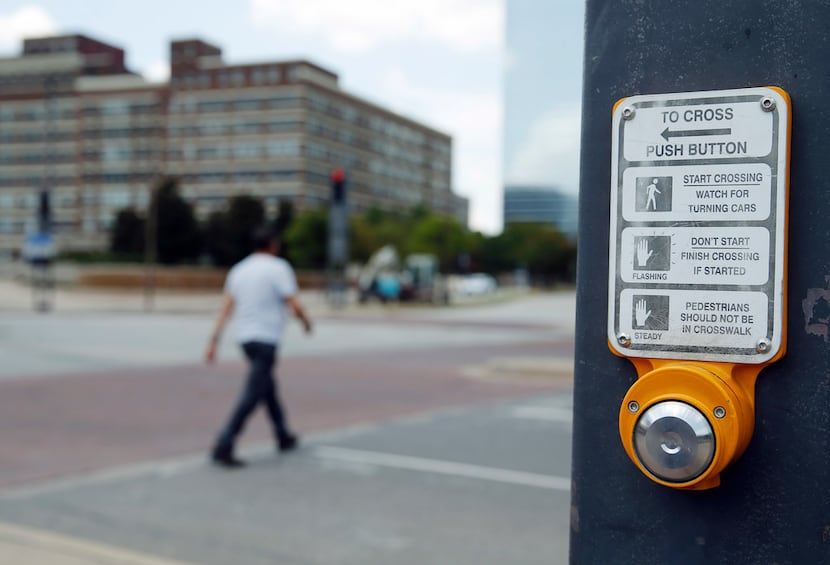Dan McDonald, a lawyer and municipal judge, has lived in an East Dallas townhouse on Oram Street for more than two decades. And several years ago, he knew what the rest of the public had yet to figure out — the walk buttons for pedestrians didn't do anything.
In the intersection of Oram and Skillman streets, McDonald recalled pressing the button to cross.
"I stopped and I thought, 'Is this doing any good?'"

So McDonald timed it to find out, with and without pushing the button. And then he timed it again, and again. The light didn't change any faster.
When The Dallas Morning News in July 2014 reported that nearly all push buttons in the city didn't speed up the walk signal, McDonald felt vindicated. And when Curious Texas began, it led him to ask: What's today's status on the push buttons?
Michael Rogers, director of transportation in Dallas, said about two-thirds of the traffic signals now have updated, interactive controllers. That includes working push buttons for pedestrians.
Some of the upgraded traffic signals also have newly improved detectors, which replaces an "inductive loop" system — one that solely detects vehicles on the roads — with a "radar" system that can pick up pedestrians, cyclists and scooters, Rogers said. He expects the upgrades to be complete by the end of this year.
"It is all about detection, and that has been our No. 1 issue," Rogers said.
The city's traffic signals previously operated on a pre-timed system, which means that a signal changes at certain times throughout the day to cycle through traffic, regardless of interactions at the crosswalks.
The interactive push buttons will cost nearly $20 million and are part of the city's overall plan to improve its traffic flow, Rogers said. The city will also need to integrate a new Transit Signal Priority pilot program, which will prioritize buses in certain corridors with extended or early green lights.
"With our systems right now, we can't give anybody priority," Rogers said.
Now, at intersections with interactive push buttons, pedestrians must push the button to activate the walk signal, Rogers said. About 20 of the push buttons are in downtown Dallas, mostly at major intersections with a longer walk to cross. A few crosswalks also have audible signals to help blind pedestrians.
The city manager's proposed budget for the next fiscal year allocates $1.45 million to upgrade another 40 traffic signals to the "radar" detector. It'll take years before the city updates every intersection, Rogers said.
But the improvements so far were good news to McDonald, who said he thought the detectors' sensitivity to pedestrians is important. In the past, he's told walkers pushing the buttons that they didn't work. They didn't believe him, he said.
"We're so trusting that we think we're going to press the button and sure enough the light would change," McDonald said.
Correction: A previous version of this article misstated the purpose of the audible crosswalk signals. They are to help blind pedestrians.
Tell us:
What do you wonder about the culture, people and institutions of North Texas — and the rest of our great state? Help us investigate stories that matter to you.
No question is too big or too small. Let's get started!

